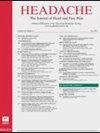退伍军人健康管理局内不同临床环境下临床药剂师头痛护理角色的比较:优化药剂师整合
IF 4
2区 医学
Q1 CLINICAL NEUROLOGY
引用次数: 0
摘要
背景研究表明,跨学科治疗对解决包括头痛疾病在内的慢性疼痛综合征非常有效。本定性研究旨在阐明退伍军人健康管理局(VHA)中临床执业药师(CPPs)--具有执业范围的高级执业药师--在跨学科头痛护理协作团队中发挥更大作用的潜力。我们的研究问题是在头痛卓越中心(HCoE)和非头痛卓越中心的美国退伍军人管理局(VHA)机构中,临床药剂师如何与跨学科头痛护理团队融合,以及如何配置他们的角色以优化头痛专科护理服务?方法这项横断面定性研究采用有目的的抽样方法,招募在头痛卓越中心(HCoE)和非头痛卓越中心的美国退伍军人管理局(VHA)机构中提供头痛护理服务的临床药剂师进行虚拟、录音、个人访谈。多阶段定性数据分析包括:团队讨论;沉浸/结晶,仔细阅读记录誊本,以确定 CPP 经验的 HCoE 与非 HCoE 比较的新模式;使用电子表格对团队数据进行分类;进一步沉浸到分类数据中,以最终确定比较结果并对数据进行解释。CPP在HCoE内外的角色有很大的重叠,因为这两个群体都与医生共同管理头痛患者。CPPs 承担着独立和协作的责任,他们通过提供直接的患者护理和转诊到其他医疗机构进行头痛治疗来扩展头痛专科医生的服务。当他们在HCoE内外的角色不同时,主要是由于跨学科头痛或疼痛团队的整合程度不同。HCoE内的CPP与头痛神经科医生和跨学科团队合作;HCoE外的一些CPP也与他们合作,而另一些则与初级医疗机构合作。在HCoE中,CPP每周专门用于头痛的时间往往更多。尽管如此,两组受访者中的大多数人都表示,患者的需求超过了他们机构中 CPP 的可用性,CPP 可以进行详细的病历审查、初次就诊以了解患者头痛的背景情况,以及定期随访以监测和调整治疗方案。CPP 还向医生提供头痛药学方面的咨询和教育,特别是关于非处方药物的适当使用。结论本研究的结果表明,CPP 在头痛护理中的作用对临床同事及其患者都很有价值,应在 HCoE 和非 HCoE 的 VHA 机构中加以利用和扩展。当CPP实质性地融入跨学科头痛护理团队时,他们可以提供独特的知识、头痛管理和患者行为改变技能,扩展头痛专家的服务,并提供患者和医生教育。这些综合职责有助于提高患者的治疗效果,促进患者持续获得高质量的循证头痛治疗。本文章由计算机程序翻译,如有差异,请以英文原文为准。
Comparison of clinical pharmacist practitioners’ headache care roles across clinical contexts within the Veterans Health Administration: Optimizing pharmacist integration
BackgroundStudies show interdisciplinary treatment is highly effective for addressing chronic pain syndromes, including headache disorders. Increasingly, advanced practice pharmacists work collaboratively with physicians to apply their unique skills to enhance patient outcomes.ObjectiveThis qualitative study aimed to elucidate the potential in the Veterans Health Administration (VHA) for increased roles of clinical pharmacist practitioners (CPPs)—advanced practice pharmacists with a scope of practice—in collaborative, interdisciplinary headache care teams. Our research question was: How do CPPs integrate with interdisciplinary headache care teams in Headache Centers of Excellence (HCoE) and non‐HCoE VHA facilities, and how can their roles be configured to optimize headache specialty care services?MethodsThis cross‐sectional qualitative study used purposive sampling to recruit CPPs providing headache care within HCoEs and in non‐HCoE VHA facilities for virtual, recorded, individual interviews. Multi‐stage qualitative data analysis entailed: team discussions; immersion/crystallization for close reading of transcripts to identify emerging patterns of HCoE/non‐HCoE comparison of CPPs’ experiences; team data sorting using spreadsheets; and further immersion into sorted data for final identification of comparisons and interpretation of the data.ResultsA total of 15 CPPs involved in headache care were interviewed, with about half working in HCoEs and half in non‐HCoE VHA facilities across the United States. CPPs’ roles within and outside HCoEs have considerable overlap as both groups co‐manage patients with headache with physicians. CPPs have independent and collaborative responsibilities as they extend headache specialists’ services by providing direct patient care and referring to additional providers for headache treatment. When their roles differ within and outside HCoEs it is largely due to level of integration on interdisciplinary headache or pain teams. CPPs in HCoEs collaborate with headache neurologists and interdisciplinary teams; some outside HCoEs do as well, while others work with primary care. CPPs’ weekly time dedicated specifically to headache tends to be greater in HCoEs. Nevertheless, most interviewees in both groups stated patient need exceeds CPP availability at their facilities for conducting detailed chart reviews, initial visits to understand the context of patients’ headache, and scheduled follow‐ups over time to monitor and adjust treatment. CPPs also consult with and educate physicians on headache pharmacy, particularly regarding appropriate use of non‐formulary medications.ConclusionFindings from this study suggest that CPPs’ roles in headache care are valuable to clinical colleagues and their patients and should be leveraged and expanded within HCoEs and non‐HCoE VHA facilities. When substantively integrated into interdisciplinary headache care teams, CPPs offer unique knowledge, headache management and patient behavior change skills, extend headache specialists’ services, and provide both patient and physician education. These combined responsibilities contribute to enhancing patient outcomes and facilitating ongoing access to high quality, evidence‐based headache care.
求助全文
通过发布文献求助,成功后即可免费获取论文全文。
去求助
来源期刊

Headache
医学-临床神经学
CiteScore
9.40
自引率
10.00%
发文量
172
审稿时长
3-8 weeks
期刊介绍:
Headache publishes original articles on all aspects of head and face pain including communications on clinical and basic research, diagnosis and management, epidemiology, genetics, and pathophysiology of primary and secondary headaches, cranial neuralgias, and pains referred to the head and face. Monthly issues feature case reports, short communications, review articles, letters to the editor, and news items regarding AHS plus medicolegal and socioeconomic aspects of head pain. This is the official journal of the American Headache Society.
 求助内容:
求助内容: 应助结果提醒方式:
应助结果提醒方式:


